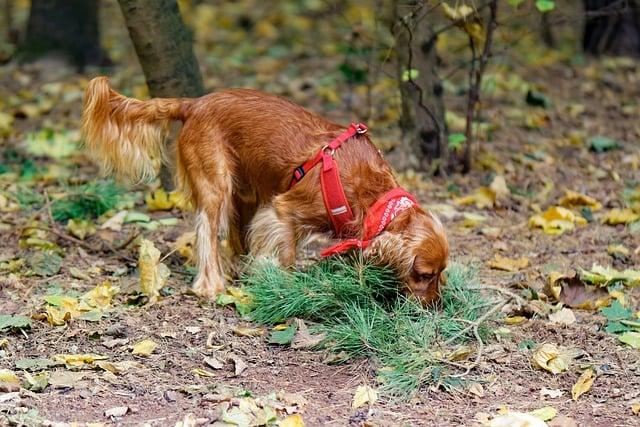Max, a once-friendly Labrador, had turned aggressive after a few bad experiences at the dog park. His owner, Sarah, felt helpless until she discovered the power of positive reinforcement. By rewarding Max for calm behavior and gradually exposing him to other dogs in controlled settings, she transformed his aggression into confidence. With patience and the right techniques, Sarah not only saved her bond with Max but also created a safer environment for everyone. Don’t let aggression define your dog; take action today for a happier, healthier companion!
Contents
- Understanding the Root Causes of Aggressive Behavior in Dogs
- Effective Training Techniques to Mitigate Aggression
- Creating a Safe and Structured Environment for Your Dog
- The Importance of Professional Guidance and Support in Behavior Modification
- Q&A
Understanding the Root Causes of Aggressive Behavior in Dogs
Understanding aggressive behavior in dogs requires a deep dive into various underlying factors that can contribute to this troubling issue. **Genetics** plays a significant role; certain breeds may have predispositions to aggression due to their lineage. Additionally, **early socialization** is crucial. Dogs that are not exposed to different environments, people, and other animals during their formative months may develop fear-based aggression as they grow older.
Another critical aspect is **past experiences**. Dogs that have been abused, neglected, or poorly treated may exhibit aggressive tendencies as a defense mechanism. This behavior is often rooted in fear and anxiety, leading them to react aggressively when they feel threatened. Furthermore, **health issues** can also trigger aggression. Pain or discomfort from medical conditions can make a dog irritable and more likely to lash out, so it’s essential to rule out any underlying health problems.
Environmental factors also contribute significantly to aggressive behavior. A dog that feels insecure in its surroundings may react aggressively to perceived threats. This can include loud noises, unfamiliar people, or other animals invading their space. **Lack of proper training** can exacerbate these issues, as dogs without clear boundaries or commands may resort to aggression when they feel overwhelmed or confused.
it’s important to recognize the role of **owner behavior** in shaping a dog’s temperament. Dogs are highly attuned to their owners’ emotions and reactions. If an owner displays anxiety or aggression, the dog may mirror these behaviors. Establishing a calm and assertive leadership style can help mitigate aggressive tendencies. By understanding these root causes, owners can take proactive steps to address and correct aggressive behavior in their dogs effectively.
Effective Training Techniques to Mitigate Aggression
Understanding the root causes of aggression in dogs is crucial for effective training. Many aggressive behaviors stem from fear, anxiety, or territorial instincts. By identifying triggers, you can tailor your training approach to address these underlying issues. For instance, if your dog reacts aggressively to strangers, gradual desensitization can help. Start by exposing your dog to a safe distance from the trigger and rewarding calm behavior. Over time, you can decrease the distance, reinforcing positive responses.
Positive reinforcement is a powerful tool in modifying aggressive behavior. Instead of punishing your dog for aggressive actions, focus on rewarding desirable behaviors. This can include treats, praise, or playtime when your dog remains calm in situations that typically provoke aggression. **Consistency** is key; ensure that all family members apply the same training techniques to avoid confusion. By creating a positive association with previously feared stimuli, you can help your dog learn to respond more appropriately.
Incorporating structured training sessions can also be beneficial. Regular practice of commands such as “sit,” “stay,” and “leave it” not only reinforces good behavior but also establishes you as the leader. This can reduce anxiety and uncertainty in your dog, which often leads to aggression. Consider using **short, frequent training sessions** to maintain your dog’s interest and focus. Engaging in activities like obedience classes or agility training can further channel your dog’s energy positively while enhancing their social skills.
Lastly, managing your dog’s environment is essential in preventing aggressive incidents. Create a safe space where your dog can retreat when feeling overwhelmed. Use barriers, such as baby gates, to control interactions with other pets or visitors. Additionally, consider using a **muzzle** during walks if your dog has a history of aggression, as a precautionary measure. This not only protects others but also helps you feel more confident in managing your dog’s behavior. By combining these techniques, you can foster a more harmonious relationship with your dog and significantly reduce aggressive tendencies.
Creating a Safe and Structured Environment for Your Dog
Establishing a safe and structured environment is crucial for managing and reducing aggressive behavior in dogs. A well-defined space helps your dog feel secure and understand the boundaries of acceptable behavior. Start by creating a designated area in your home where your dog can retreat when feeling overwhelmed. This space should be quiet, comfortable, and free from distractions, allowing your dog to relax and decompress.
Consistency is key when it comes to training and behavior management. Implement a routine that includes regular feeding times, exercise, and play. Dogs thrive on predictability, and a structured schedule can significantly reduce anxiety, which often leads to aggression. Additionally, ensure that all family members are on the same page regarding rules and commands. This unified approach reinforces your dog’s understanding of expectations and promotes a harmonious living environment.
Socialization plays a vital role in preventing aggressive tendencies. Gradually expose your dog to various environments, people, and other animals in a controlled manner. Use positive reinforcement techniques to reward calm behavior during these interactions. Consider enrolling your dog in obedience classes or socialization groups, where they can learn to navigate new situations under the guidance of a professional trainer. This exposure helps build confidence and reduces fear-based aggression.
Lastly, be mindful of your dog’s body language and triggers. Understanding what causes your dog to react aggressively is essential for creating a safe environment. Keep a journal to track incidents and identify patterns. By recognizing these triggers, you can take proactive measures to avoid situations that may lead to aggressive behavior. Implementing management strategies, such as using a leash or muzzle in high-stress situations, can further ensure safety for both your dog and those around them.
The Importance of Professional Guidance and Support in Behavior Modification
When addressing aggressive behavior in dogs, seeking professional guidance is crucial for effective and lasting change. Experienced trainers and behaviorists possess the knowledge and skills necessary to identify the underlying causes of aggression, which can range from fear and anxiety to territorial instincts. By understanding these triggers, professionals can tailor a behavior modification plan that is both safe and effective for your dog.
Moreover, professional support provides a structured approach to training that is often difficult to achieve on your own. A trained expert can offer personalized strategies that take into account your dog’s unique personality and history. This individualized attention ensures that the methods used are appropriate for your dog’s specific needs, increasing the likelihood of success. Additionally, professionals can guide you in implementing consistent training techniques, which are essential for reinforcing positive behavior.
Another significant advantage of working with a professional is the ability to monitor progress and make necessary adjustments. Behavior modification is not a one-size-fits-all process; it requires ongoing evaluation and adaptation. A skilled trainer can assess your dog’s reactions and provide real-time feedback, allowing for timely interventions if the initial strategies are not yielding the desired results. This dynamic approach helps to prevent setbacks and fosters a more positive learning environment.
engaging with a professional not only benefits your dog but also empowers you as an owner. Through education and support, you will gain a deeper understanding of canine behavior and learn effective communication techniques. This knowledge not only enhances your relationship with your dog but also equips you with the tools to manage future behavioral challenges. Investing in professional guidance is a proactive step towards ensuring a harmonious and safe environment for both you and your furry companion.
Q&A
-
What are the signs of aggressive behavior in dogs?
Recognizing the signs of aggression is crucial for prevention. Common indicators include:
- Growling or snarling
- Baring teeth
- Stiff body posture
- Raised hackles
- Snapping or lunging
Identifying these behaviors early can help you take action before situations escalate.
-
What causes aggressive behavior in dogs?
Aggression can stem from various factors, including:
- Fear or anxiety
- Pain or discomfort
- Protective instincts over territory or family
- Lack of socialization
Understanding the root cause is essential for effective intervention.
-
How can I prevent my dog from becoming aggressive?
Prevention is key to ensuring a well-adjusted dog. Consider these strategies:
- Early socialization with other dogs and people
- Positive reinforcement training techniques
- Consistent routines and boundaries
- Regular exercise to reduce pent-up energy
Implementing these practices can significantly reduce the likelihood of aggressive behavior.
-
When should I seek professional help for my dog’s aggression?
If your dog’s aggressive behavior escalates or poses a risk to others, it’s time to consult a professional. Signs that you should seek help include:
- Frequent aggressive outbursts
- Inability to control your dog in social situations
- Increased fear or anxiety in your dog
- Concerns about safety for yourself or others
Professional trainers or behaviorists can provide tailored strategies to address and manage aggression effectively.
addressing aggressive behavior in dogs is essential for their well-being and your peace of mind. By implementing positive training techniques and seeking professional guidance, you can foster a harmonious relationship with your furry companion. Take action today!

大家好,我是彼得潘,專業的手法身體治療師。我喜歡探索和研究各種主題,並透過與人工智慧的合作分享專業、實用、有趣的文章。我們定期進行人工審核,以確保內容的準確性。如果您發現文章中有任何不準確的地方,請隨時與我們聯繫,我們會及時糾正。您可以透過 [email protected] 與我們聯繫。



